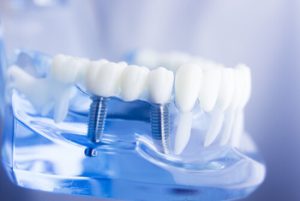When it comes to replacing missing teeth, a dental bridge is often one of the most recommended solutions. However, one common question many patients have is: “Is a dental bridge permanent?” While dental bridges provide long-lasting results, they are not considered a lifetime solution like dental implants. However, with good care and maintenance, they can serve you well for many years.
In this blog, we’ll break down everything you need to know about dental bridges, including their longevity, different types, and how they compare to other dental restoration options like implant-supported bridges.
Understanding Dental Bridges: Function and Benefits
A dental bridge is a restorative prosthetic designed to fill the space left by one or more missing teeth, connecting to the adjacent teeth for stability. It typically includes a false tooth (pontic), which is anchored by abutment teeth on either side. To enhance support and durability, these abutment teeth are often fitted with dental crowns.
The bridge connects to healthy teeth or, in some cases, to dental implants, restoring function and improving the appearance of your confident smile.
The Role of Dental Bridges in Oral Health
A dental bridge is more than just a way to replace missing teeth, it plays a crucial role in maintaining oral health, dental function, and even facial structure. When a tooth is lost, it can cause a domino effect of issues, from bone loss to gum disease. A dental bridge procedure helps prevent these complications while restoring the aesthetics of your confident smile.
Let’s examine the role of dental bridges in maintaining excellent oral health and their significance in dental restoration.
 1. Prevents Shifting of Adjacent Teeth
1. Prevents Shifting of Adjacent Teeth
When a tooth is lost, the surrounding teeth gradually move into the vacant space over time. This can cause:
- Misalignment and bite problems
- Increased difficulty in chewing and speaking
- Uneven distribution of bite force, leading to tooth wear
A dental bridge connects the teeth on either side of the gap, preventing unwanted movement and keeping your dental health in check.
2. Restores Proper Chewing and Speech Function
Missing teeth can make it difficult to:
- Chew food properly, leading to digestive issues
- Pronounce words correctly, affecting speech clarity
A dental bridge replaces the missing tooth with a false tooth, restoring natural chewing ability and speech function. This is especially important for those missing front teeth, as they play a significant role in forming sounds.
3. Helps Maintain Jawbone and Facial Structure
When teeth are missing, the jawbone in that area begins to shrink and deteriorate due to a lack of stimulation. This can lead to:
- Bone loss and deterioration of the jaw
- A sunken facial appearance, making you look older
- Weakening of neighbouring teeth
While dental implants are the best at preventing bone loss, a dental bridge still helps maintain facial structure by supporting the surrounding teeth and preventing them from collapsing inward.
4. Reduces the Risk of Gum Disease and Tooth Decay
Gaps left by missing teeth expose the gum line, creating an environment where food particles and bacteria can easily accumulate. This increases the risk of:
- Gum disease (gingivitis or periodontitis)
- Tooth decay in the adjacent teeth
A permanent dental bridge covers these vulnerable areas, minimising the likelihood of developing oral health issues. However, proper dental hygiene is still essential to prevent plaque buildup around the bridge.
5. Evenly Distributes Bite Force
When a tooth is missing, the remaining natural teeth take on extra pressure during chewing. Over time, this can lead to:
- Tooth fractures or wear
- Increased stress on the temporomandibular joint (TMJ), causing jaw pain
A dental bridge restores proper bite alignment, ensuring that pressure is evenly distributed across the teeth and preventing excessive stress on any one area.
6. Boosts Confidence and Aesthetics
Having a missing tooth can affect more than just dental health, it can impact self-esteem and social confidence. A dental bridge restores a natural smile, helping individuals feel more comfortable in personal and professional settings.
Are Dental Bridges Permanent?
A dental bridge is often considered a permanent solution for replacing missing teeth, but does it truly last forever? While dental bridges are long-lasting and fixed in place, they do not last a lifetime. Over time, natural wear, tooth decay, or gum disease can affect their durability, requiring replacement or repair.
In this guide, we’ll explore how long dental bridges last, what factors impact their longevity, and how they compare to dental implants as a more permanent solution.
How Long Do Dental Bridges Last?

- 10 to 15 years if maintained with good oral hygiene and regular dental check-ups
- 20+ years for implant-supported bridges
A traditional bridge will require replacement over time, but implant-supported bridges have a much longer lifespan since they are anchored to an artificial root instead of natural teeth.
Key Factors Influencing the Lifespan of Dental Bridges
Several factors influence the longevity of a dental bridge and determine when it may require replacement:
1. Type of Dental Bridge
Different types of dental bridges have varying levels of durability:
- Traditional Dental Bridge – Lasts 10-15 years but depends on the strength of the abutment teeth.
- Implant-Supported Bridge – The most permanent solution, lasting 20+ years with proper care.
2. Condition of Abutment Teeth
A dental bridge relies on abutment teeth (the teeth that support the bridge). If these surrounding teeth develop tooth decay, gum disease, or become weak, the bridge may fail earlier than expected.
3. Oral Hygiene Routine
- Brushing and flossing properly around the dental bridge helps prevent gum disease and tooth decay.
- Using special floss or a water flosser cleans underneath the bridge, preventing plaque buildup.
- Regular use of fluoride toothpaste strengthens the natural teeth supporting the bridge.
4. Dental Cement and Bonding Strength
A dental bridge is held in place with special dental cement. Over time, this cement may weaken, leading to loosening or failure. Routine dental check-ups help with early detection of issues and provide reinforcement when necessary.
5. Eating Habits and Daily Use
- Hard foods (like nuts and ice) can weaken or damage a dental bridge.
- Sticky foods like caramel or chewing gum can slowly compromise the bridge’s stability, potentially causing it to loosen over time.
- Using your teeth as tools, such as to open bottles or tear packaging, can weaken a dental bridge and reduce its longevity.
6. Underlying Gum and Bone Health
If gum disease or bone loss occurs, the supporting teeth may no longer provide adequate stability for the bridge, leading to failure.
Signs You May Need a Dental Bridge Replacement
Even with proper care, a dental bridge will eventually need replacement. Look out for these warning signs:
- Loosening of the bridge – If the bridge connects poorly or feels wobbly, visit your dentist regularly.
- Pain or sensitivity – This could indicate decay under the dental crowns.
- Gum recession or infection – Poorly maintained bridges may contribute to gum disease.
- Visible wear or cracks – Damaged false teeth or abutment teeth require prompt attention.
If you experience any of these issues, consult a dental professional for evaluation.
How to Extend the Life of Your Dental Bridge
A permanent dental bridge can last longer than expected with the right care:
- Practise Good Oral Hygiene: Brush and floss daily to prevent tooth decay and gum disease.
- Use a Water Flosser: Helps clean around and under the bridge for better dental health.
- Avoid Hard and Sticky Foods: Protects the false tooth and dental cement.
- Schedule Regular Dental Check-Ups: Detect early signs of wear or damage.
- Consider an Implant-Supported Bridge: If replacing your bridge, an implant-supported option may offer better longevity.
Types of Dental Bridges: Which One is Best for You?
There are various types of dental bridges, each suited for different dental needs. Here’s a breakdown of the most common options:
1. Traditional Dental Bridge
- The most commonly used dental bridge procedure
- Requires placing dental crowns on the adjacent teeth to support the bridge and fill the gap.
- Best for replacing missing teeth when strong abutment teeth are available
 2. Implant-Supported Bridges
2. Implant-Supported Bridges
- Secured by dental implants instead of natural abutment teeth
- Acts like real teeth, preventing bone loss and gum recession
- Considered the most durable and permanent solution
How to Take Care of Your Dental Bridge for Long-Lasting Results
Even though a dental bridge is fixed, proper care is key for maintaining dental health and ensuring its longevity.
Tips for Caring for Your Dental Bridge
Maintain Good Oral Hygiene: Brush twice daily and floss regularly to prevent tooth decay and gum disease.
Use a Special Floss or Water Flosser: Clean under the bridge to remove food debris and bacteria.
Avoid Hard or Sticky Foods: This prevents damage to the artificial tooth and dental cement.
Schedule Regular Dental Check-Ups: Visit your dentist regularly for professional cleaning and assessment.
Watch for Signs of Wear: If your bridge becomes loose, see a dental professional immediately.
By following these steps, you can extend the life of your permanent dental bridge and maintain optimal oral health.
Final Thoughts: Is a Dental Bridge the Right Choice for You?
A dental bridge is a semi-permanent and effective solution for replacing missing teeth, restoring both function and aesthetics. While not entirely permanent, it can last for more than a decade with proper care and regular dental check-ups.
If you’re considering a dental bridge procedure, consult a dental professional to explore the best type of bridge for your needs. Whether you opt for a traditional bridge or an implant-supported bridge, maintaining good oral hygiene and prioritising dental health is essential for long-term success.
Contact Advanced Dental Care at (02) 6188 7103 to discuss your options and restore your confident smile today!
References
Cleveland Clinic. (n.d.). Dental bridges. Retrieved from https://my.clevelandclinic.org/health/treatments/10921-dental-bridges
Colgate. (n.d.). What is good oral hygiene? Retrieved from https://www.colgate.com/en-us/oral-health/adult-oral-care/what-is-good-oral-hygiene
Mayo Clinic. (n.d.). Dental implant surgery. Retrieved from https://www.mayoclinic.org/tests-procedures/dental-implant-surgery/about/pac-20384622
Healthline. (n.d.). Sunken cheeks: Causes and treatments. Retrieved from https://www.healthline.com/health/sunken-cheeks


 1. Prevents Shifting of Adjacent Teeth
1. Prevents Shifting of Adjacent Teeth 2. Implant-Supported Bridges
2. Implant-Supported Bridges




